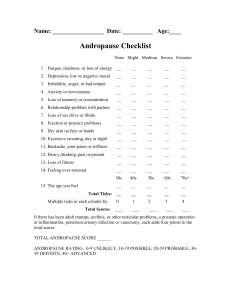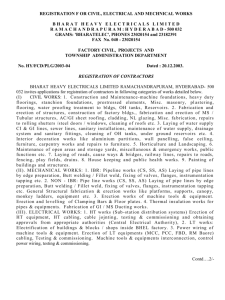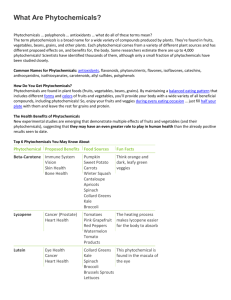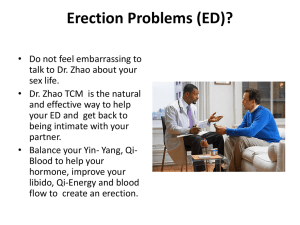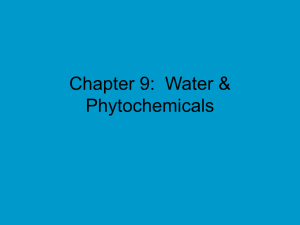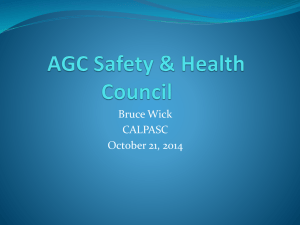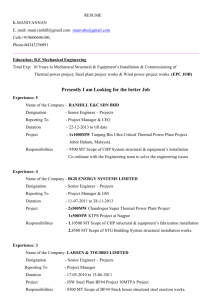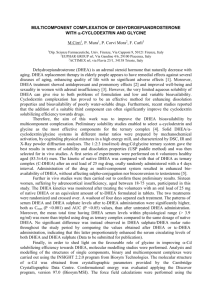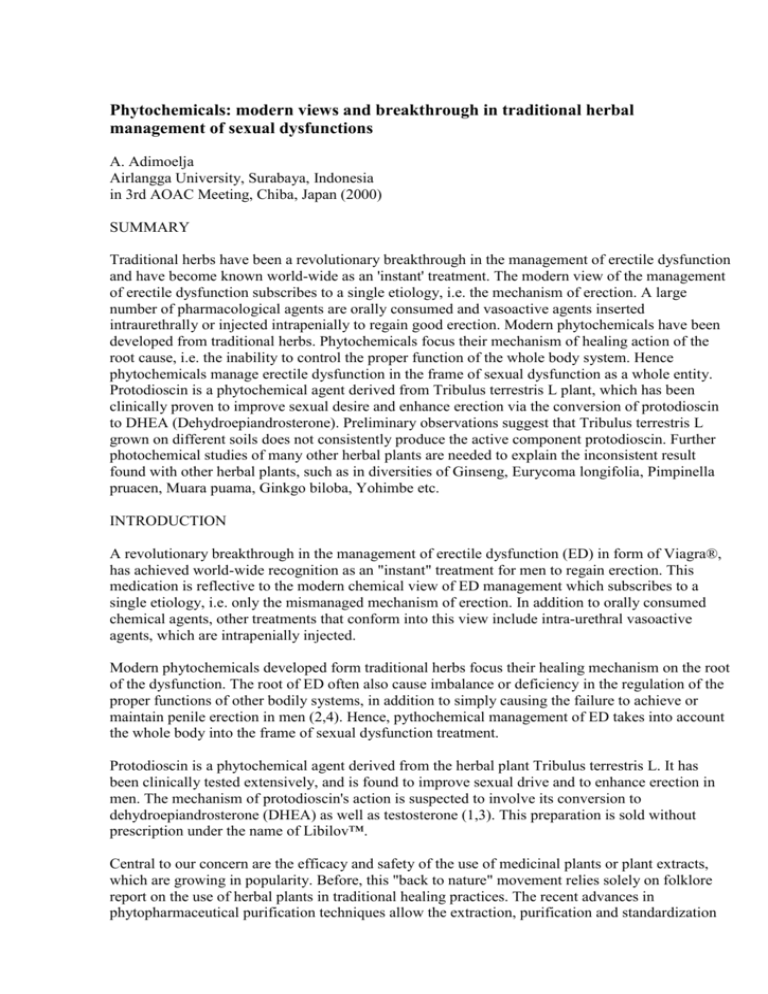
Phytochemicals: modern views and breakthrough in traditional herbal
management of sexual dysfunctions
A. Adimoelja
Airlangga University, Surabaya, Indonesia
in 3rd AOAC Meeting, Chiba, Japan (2000)
SUMMARY
Traditional herbs have been a revolutionary breakthrough in the management of erectile dysfunction
and have become known world-wide as an 'instant' treatment. The modern view of the management
of erectile dysfunction subscribes to a single etiology, i.e. the mechanism of erection. A large
number of pharmacological agents are orally consumed and vasoactive agents inserted
intraurethrally or injected intrapenially to regain good erection. Modern phytochemicals have been
developed from traditional herbs. Phytochemicals focus their mechanism of healing action of the
root cause, i.e. the inability to control the proper function of the whole body system. Hence
phytochemicals manage erectile dysfunction in the frame of sexual dysfunction as a whole entity.
Protodioscin is a phytochemical agent derived from Tribulus terrestris L plant, which has been
clinically proven to improve sexual desire and enhance erection via the conversion of protodioscin
to DHEA (Dehydroepiandrosterone). Preliminary observations suggest that Tribulus terrestris L
grown on different soils does not consistently produce the active component protodioscin. Further
photochemical studies of many other herbal plants are needed to explain the inconsistent result
found with other herbal plants, such as in diversities of Ginseng, Eurycoma longifolia, Pimpinella
pruacen, Muara puama, Ginkgo biloba, Yohimbe etc.
INTRODUCTION
A revolutionary breakthrough in the management of erectile dysfunction (ED) in form of Viagra®,
has achieved world-wide recognition as an "instant" treatment for men to regain erection. This
medication is reflective to the modern chemical view of ED management which subscribes to a
single etiology, i.e. only the mismanaged mechanism of erection. In addition to orally consumed
chemical agents, other treatments that conform into this view include intra-urethral vasoactive
agents, which are intrapenially injected.
Modern phytochemicals developed form traditional herbs focus their healing mechanism on the root
of the dysfunction. The root of ED often also cause imbalance or deficiency in the regulation of the
proper functions of other bodily systems, in addition to simply causing the failure to achieve or
maintain penile erection in men (2,4). Hence, pythochemical management of ED takes into account
the whole body into the frame of sexual dysfunction treatment.
Protodioscin is a phytochemical agent derived from the herbal plant Tribulus terrestris L. It has
been clinically tested extensively, and is found to improve sexual drive and to enhance erection in
men. The mechanism of protodioscin's action is suspected to involve its conversion to
dehydroepiandrosterone (DHEA) as well as testosterone (1,3). This preparation is sold without
prescription under the name of Libilov™.
Central to our concern are the efficacy and safety of the use of medicinal plants or plant extracts,
which are growing in popularity. Before, this "back to nature" movement relies solely on folklore
report on the use of herbal plants in traditional healing practices. The recent advances in
phytopharmaceutical purification techniques allow the extraction, purification and standardization
of the active components of these plants, which are known generally as phytochemicals (2,4). In
turn, the standardization allows scientific research and clinical trials evaluating the benefits and
potential hazards of the use of these preparations, to be conducted.
It is not often acknowledged that more than 25% of all "western" medicines contain active
ingredients derived from plant sources. In Asian and European countries, physicians often write
herbal-based prescription (5), although this is not common practice in the United States. In the
evolution of natural medicine, phytochemicals represent the culmination the effort to achieve
scientific reputability of these plant-based active ingredients, by ways of scientific research and
clinical trials akin to that of chemical drugs. It is hoped that the use of phytochemicals would avoid
many of the risk factors associated with synthetic chemicals. Psychopharmacology, phytopharmacognosy and ethno-phyto-pharmacognosy (13) of phytochemical studies should therefore be
encouraged to create new and safe medicines that conform to the standard precautions of modern
medicine, but with minimal undesired toxic effects.
PHARMACODYNAMICS OF PHYTOCHEMICALS
Herbal plants contain chemical compounds, vitamins, plant hormones, minerals and trace elements,
most of which function to result in optimal plant growth, to protect the plant from environmental
hazards and to attract symbiotic insects required for fertilization. Some of these compounds react
holistically with other agents and elements in humans or animals to treat a specific medical ailment
and to create a better metabolic balance which contributes to a better sense of well-being and to
promote general health.
The philosophy behind the use of active phytochemical from herbal sources rests on the adoption of
the natural pharmacodynamic action in the plant itself. In contrast, purifying the phytochemicals to
a single agent would simply imitate the chemical production of a synthetic chemical. A single
synthetic chemical agent in medicine often affects only a single etiological factor or a malmechanism of cell and organ functions. For example, Virag (1982) first introduced the synthetic
chemical papaverine to relax the cavernosal smooth muscle in the penis to induce erection in ED
patients. Followed by the discovery of the mechanism of erection (de Tejada, 1992 and Shirai,
1992), this constituted a breakthrough in the management of ED. However, the instantaneous effect
afforded by this chemical requires repetitive injections to achieve erections. Thus papaverin as a
synthetic vasoactive compound in fact does not cure ED. Relaxing the corporal smooth muscle of
the penis addresses only one of the problems in the complicated process of penis erection (9,14).
This is analogous for other vasoactive compounds such as phentolamine (Regitin®), prostaglandin
E1 (Alprostadil®), and other oral synthetic chemicals such as sildenafil citrate (Viagra®),
apomorphine SL (Uprima®), and phenotolamine (Vasomax®). These synthetic compounds may
indeed offer the benefit of fast action and "instant" erection in ED patients, but in general the use of
these compounds are required each and every time to initiate erection. Erection is only one phase
out of the four recognized phases of sexual behaviors in men (10). These synthetic chemicals do not
address the whole ailment by neglecting to treat the disorder holistically. In contrast, many
phytochemicals' actions are to address the root cause of the imbalance and deficiency that result in
abnormal functions of cells and organs in the body.
CLINICAL TRIALS ON MALE FERTILITY AND SEXUAL FUNCTIONS
The efficacy and safety of a phytochemical must be established by rigorous testing in both scientific
and clinical settings. Protodioscin, the active ingredient in Libilov, has been subjected to many
clinical trials, with good results, thus supporting the premise of the benefits of phytochemicals in
treating complex ailments such as infertility and ED. Two of these trials are summarized below:
A double-blind, placebo-controlled, multi-center study on 45 subfertile males diagnosed with
idiopathic oligoasthenoteratozoospermia was performed to test the efficacy and safety of
protodioscin (Libilov). 36 of these men were treated with 500 mg protodioscin / day for 12 weeks,
whereas 9 were given placebo. Treatment with Libilov successfully resulted in pregnancies in 8
(22%) of spouses of the treated group, whereas no pregnancy was found in the control group (A.
Adimoelja et al., 1995)
In another study, 30 non-diabetic and 15 diabetic male patients with ED or reduced libido were
treated with 250 mg Libilov for 3 months. Improved sexual drive was reported in 20 (67%) of the
30 non-diabetic ED men, and in 8 (53%) of the 15 diabetic ED patients. Improvement in sex drive,
increase in successful sexual intercourse and enhancement in erection quality were observed in
some patients after only 10 days of taking Libilov (A. Adimoelja and P.G. Adaikan, 1997).
THE MECHANISM OF PROTODIOSCIN'S ACTION
Many research efforts have suggested that in the body, protodioscin acts as a precursor to a key
hormone dehydroepiandrosterone (DHEA). DHEA levels in diabetic patients, especially those with
ED, are much lower than that found in normal men. Even in normal healthy men, the DHEA level
steadily declines after reaching middle age. As DHEA is hypothesized to be required for proper
maintenance of cell membrane integrity and functions, its lowered amount may result in some
aspects for aging, including lowered sex drive and poor erection.
The restoration of sex drive and enhancement of the quality of erection by protodioscin seem to
involve its conversion to DHEA and testosterone. Increased DHEA level, in turn prevents the loss
of epididymal cells which results in the improved spermiogenesis and increased fertility.
There is an intriguing possibility that DHEA may prevent premature loss of cell membrane
integrity. It may also restore the function of endothelial cells lining of corporal sinuses by
rejuvenating membranes of those cells. This may lead to a natural anti-aging therapy, which is of
particular interest for the aging population. This possibility warrants a more detailed trial of the
connection of protodioscin to DHEA.
ETNOBOTANICAL ASPECTS OF MEDICINAL PLANTS
Preliminary observations suggest that Tribulus terrestris L plants which grow on different soil
conditions do not consistently produce the active component protodioscin. This is consistent with
other studies that suggest inconsistencies in the specific extracted chemical components of other
herbal plants such as Ginseng panax, Eurycoma longifolia, Pimpinella pruacen, Muara puama, and
Ginkgo biloba (3). This aspect of medicinal plant use needs to be taken into account, as different
preparations of crude extracts of one herbal plant harvested from different locations may yield
different results.
One solution to this problem is the application of modern advances in purification and
standardization of phytochemicals preparation. Only by employing strict pharmaceutical guidelines
and quality control steps, the efficacy, safety and homogeneity of herbal based phytochemicals can
be ensured.
CONCLUSION
Although synthetic chemical agents may exert quick or immediate response, the slower acting
phytochemicals often times are more beneficial in the treatment of many cases of ED. In general,
synthetic agents are designed to act on a "single-agent" theory, such as a specific pathogen or a
specific malfunction of a cellular process. In contrast, phytochemical agents address diseases in a
more holistic approach: by restoring the balance or eliminating certain deficiencies that lead to
improper regulation of body functions and processes. In case of protodioscin, the treatment results
in improvement of the DHEA levels, which translates to improved sex drive, quality of erection,
virility and fertility.
In case of ED, the synthetic chemical agents of today's western medicine are designed for a specific
step in the complex process of erection. Although this results in immediate erection after use, it is
by no mean a cure for ED: the patient repetitively needs to take the agents to achieve erection. In
contrast, protodioscin in form of Libilov, although slower acting, allows its users to regain the
ability to achieve erection without taking anything before sexual intercourse.
REFERENCES
1. A. Adimoelja (1997) Treatment of sexual dysfunction in diabetes mellitus patients using orally
administered protodioscin and injection of vasoactive compounds. Seminar of Erectile Dysfunction
of Diabetes in Bandung, Indonesia.
2. A. Adimoelja (1997) Clinical application of Asian medicine in erectile dysfunction (ED). Int. J.
Impotence Research v9, supp 1.
3. A. Adimoelja and P.G. Adaikan (1997). Protodioscin (Libilov) from herbal plant tribulus
terrestris L improves the male sexual functions, probably via DHEA. Int. J. Impotence Research v9,
supp 1.
4. A. Adimoelja (1999) The application of phytochemicals as aphrodisiac. Seminar on Botanical
Aphrodisiacs, UNTAG University, Jakarta, Indonesia (1999)
5. M. Castleman (1995) Healing Herbs. Bantam Books, NY. pp. 1-5
6. S. Chernicske (1996) The DHEA Breakthrough. Ballantine Book , N.Y.
7. A. Gauthaman, P.G. Adaikan, and R. Prasad. Pro-erectile pharmacological effects of Tribulus
terrestris extract on the rabbit corpus cavernosum. In preparation.
8. A. Gauthaman, P.G. Adaikan, R. Prasad, V. Goh, and S. Ng. Changes in hormonal parameters
secondary to intravenous administration of Tribulus terrestris extract in primates. In preparation.
9. S. Masafumi (1992) Impotence research: progress so far and problems to overcome. Special
focus on the mechanism of penile erection. World Book of Impotence, TF Lue eds. Smith Gordon
Co publs. Ltd. - Nishimura Co. Ltd.
10. W. Masters and V. Johnson (1981) Sex and the aging process. J Am Geriatr Soc. 1981
Sep;29(9):385-90.
11. N. Moeloek, A. Adimoelja, T. Tanojo, and W. Pangkahila (1994) Trials of Tribulus terrestris
(Libilov) on oligozoospermia. Proceedings of the VIth National Congress and IIIrd International
Symposium on New Perspectives of Andrology on Human Reproduction National Congress of
Indonesian Association of Andrology. Scientific Meeting VI in Manado.
12. R. Sahelian (1996) DHEA, a Practical Guide. Avery Publications, NY.
13. I. Sidik (1999) Etnopharmacognosy and phytochemical aphrodisiac in Seminar on Botanical
Aphrodisiacs, UNTAG University, Jakarta, Indonesia (1999)
14. I.S. de Tejada (1992) Mechanism for the regulation of penile smooth muscle contractility.
World Book of Impotence, TF Lue eds. Smith Gordon Co publs. Ltd. - Nishimura Co. Ltd.

